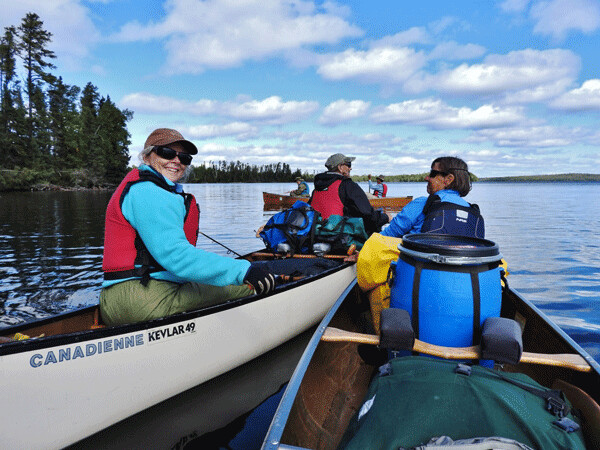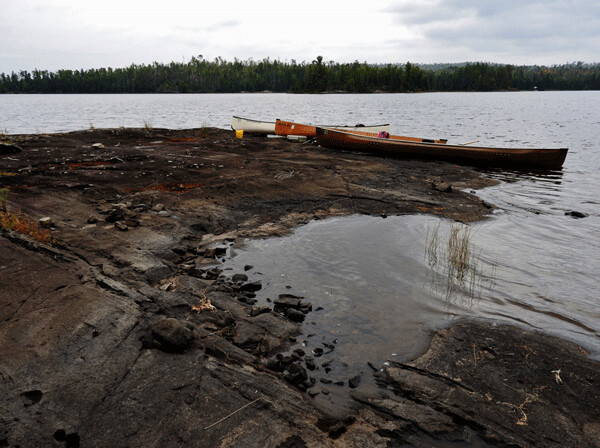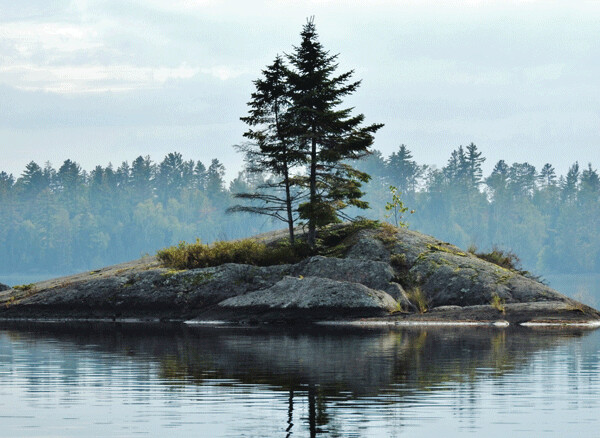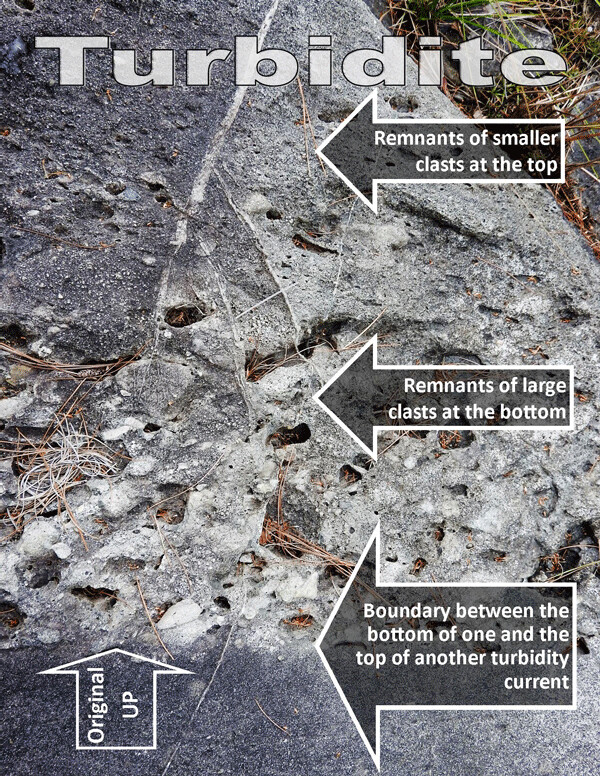News & Articles
Browse all content by date.

Our first portage was a doozey. Angular boulders jutted into the landing, and then a jagged natural staircase climbed a steep hill. We hoisted our Duluth packs, flipped up the canoes, and exuberantly navigated the obstacles. Somewhere, about halfway across the 80-rod portage, we crossed the invisible border of the Boundary Waters Canoe Area Wilderness. For my parents, our friends, and me, it was like coming home.
The search for a lunch site had just begun when we paddled past the northernmost campsite on Parent Lake. An even canopy of sturdy red pines caught my eye. With rain and storms in the forecast, this campsite promised protection from wind and lightning, and good options for hanging rain tarps. A gently sloping rock at the water’s edge and a sandy beach all checked off more requirements in my head. Even though we’d planned to do one more portage that day, this campsite was where we wanted to be for the next three, rainy nights.
On every portage, campsite, and lake, rocks shape our experiences, and they play an integral role in almost every aspect of a trip to the Boundary Waters. Rocks are prominent here because thousands of years ago the glaciers scoured off topsoil, loose sediment, and even layers and chunks of the bedrock itself. What remains is the foundation of the Canadian Shield—the heart of the continent.

The tangible geology of the Boundary Waters began 2.7 billion years ago with the formation of the Ely Greenstone. I’d waved at roadside outcrops of this ancient stone as we headed out of town that morning. These rocks originated as molten lava oozing out of a rift into cold seawater. The temperature difference caused the lava to cool quickly and form piles of pillows, or rounded globs with an appearance somewhat reminiscent of the stuff in a lava lamp. Later metamorphosis under heat and pressure caused the formation of green, chlorite mica crystals and preserved the pillow structures. As much as 5,000 meters thick in places, these pillow basalts formed a base for even more volcanism.
The oozing basalts eventually gave way to explosive eruptions, and volcanoes climbed out of the depths of the inland seas and became islands.
After lunch and camp set-up, we decided to use the rest of our daylight for a short trip into neighboring Disappointment Lake. Our destination was a small x I’d penciled onto my map in 2007, when I’d spent part of a trip traveling with Tom Fitz, my geology professor from Northland College. Scribbled next to the x was the work “turbidite.”

We paddled past plenty of islands to get there, but none of them were volcanoes—at least not active ones. Turning into the boggy bay marked by the x, we pulled our canoes up on the gently sloping, gray hump of a rock just barely breaking the surface of the lake like a breaching whale.
The whale had stripes. Not stripes of color, but bands of different textures were plainly visible. There’d be about a foot of smooth, gray rock, bounded on either side by sections pitted with oblong cavities. Looking closely, I could see that one side of the pock-marked area gradually changed from bigger to smaller holes until it became solid, while the other side went from holey to solid in an abrupt line.
This was the turbidite I’d been looking for. It originated over 2 billion years ago on the side of one of those ancient volcanic islands. Tectonic activity under the volcano shook loose an avalanche of loose sediments mixed with water. As this turbidity current tumbled down the slope, rocks of all sizes got caught up in the dense, muddy slurry. Once the flow began to decrease, big rocks settled out first, then smaller and smaller clasts until just the fine sands and clays were left to sift down in calmer waters.

Subsequent earthquakes spurred more turbidity currents, and layer after layer of these graded beds built up in the basin. Being buried deeper led first to lithification (rock formation) of the sediments and then to metamorphosis. Finally, years of erosion brought our rock back to the surface.
With the help of Tom in 2007, I’d learned to read this rock. The once-vertical layers had been turned on their side. Pitted bands represented layers of bigger rocks whose softer minerals had eroded away faster than the harder matrix of ancient mud. The smooth stripes were composed of smaller grains of sand and clay. By looking at which side of the pitted stripe graded into smaller clast sizes instead of transitioning abruptly at the bottom of a new bed, we could tell what direction had originally been up. Each of us took a few seconds to imagine standing on the side of the volcano when these sediments were first deposited.
Today, geologists could apply a few different names to this rock. It’s a metagraywacke, or muddy sandstone that’s been metamorphosed. It’s turbidite, or a rock formed by turbidity flows. Some people even refer to the pattern as a Bouma Sequence. My family enjoyed learning those words, but most Boundary Water’s paddlers would just call it a lunch rock. For me, though, rocks play such a fundamental role in every Boundary Waters trip that knowing about their journey makes my own just a little more meaningful.
Special Note: Emily’s book, Natural Connections: Exploring Northwoods Nature through Science and Your Senses is here! Order your copy at http://cablemuseum.org/natural-connections-book/. Listen to the podcast at www.cablemusum.org!
For 50 years, the Cable Natural History Museum has served to connect you to the Northwoods. Come visit us in Cable, WI! Our new exhibit: “Better Together--Celebrating a Natural Community” is now open!
| Tweet |


